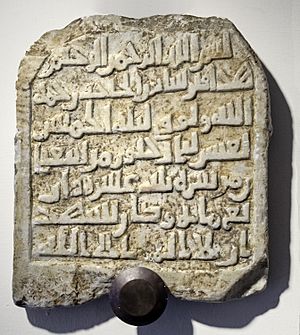Sabur al-Saqlabi facts for kids

Sabur al-Saqlabi (died 1022) was an important ruler in a part of Spain called al-Andalus. He was not born into a powerful family. Instead, he was a "freedman," meaning he was once a slave who gained his freedom. He became the very first king of the Taifa of Badajoz, a small independent kingdom.
Contents
Who Was Sabur al-Saqlabi?
Sabur was originally a slave who worked in the palace. He was freed by a powerful ruler named Al-Hakam II. The name "al-Saqlabi" means "the Slavic," which suggests he might have come from a Slavic background. However, some historians think he might have been from Persia because his name, Sabur, is similar to the Persian name Sapor.
From Slave to Ruler
Sabur was sent to rule the western part of al-Andalus, known as Al-Gharb. He was sent there by Al Mansur, a very powerful official under Hisham II, the caliph. Sabur served as a "wali," which means a governor or a leader of a province.
Becoming Independent
During a time of great trouble and fighting in al-Andalus, called the fitna of al-Andalus (which lasted from 1009 to 1031), Sabur decided to make his province independent. He declared himself the ruler of his own kingdom, the Taifa of Badajoz.
Sabur had always been loyal to the Umayyad rulers. But when the Umayyad caliph was defeated by another group called the Hammudids around 1016, Sabur likely saw his chance. He then declared his independence. Other records suggest he might have done this earlier, perhaps in 1009 or 1013.
The End of His Rule
Sabur ruled the Taifa of Badajoz until his death in 1022. After he died, his main advisor, a man named Abd Allah, took control of the kingdom. Abd Allah then started his own ruling family, known as the Aftasids.
See also
 In Spanish: Sabur al-Amirí para niños
In Spanish: Sabur al-Amirí para niños

